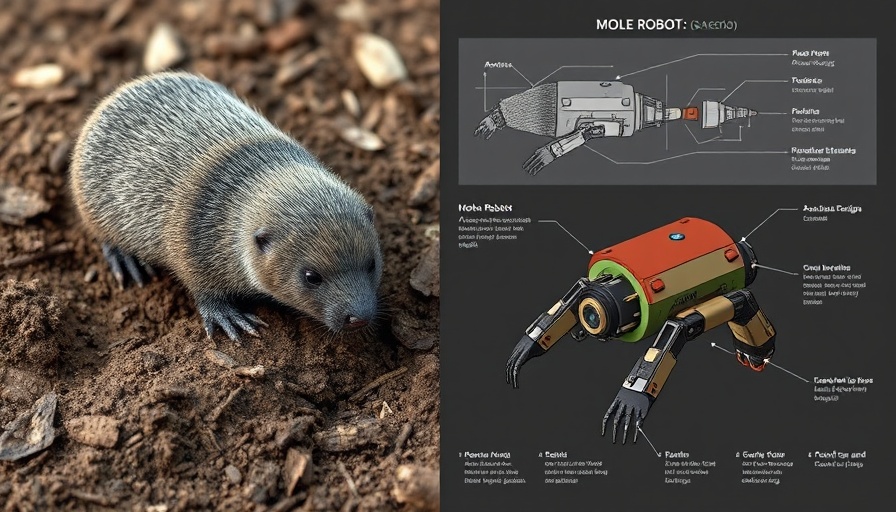
Exploring the Depths of Extraterrestrial Soil
Burrowing into soil doesn’t just uncover hidden treasures on Earth; it has the potential to revolutionize our understanding of other planets. The quest to probe beneath the surface regolith of celestial bodies like Mars and the Moon is driven by the hope of discovering evidence of past or even present life. Insights gleaned from soil analysis could provide vital clues about the climatic history and geological processes of these worlds.
Turning Nature into Technology: The Mole Inspiration
The fascinating burrowing capabilities of moles are inspiring engineers and scientists to design advanced robotic systems. A recent study from Guangdong University of Technology sheds light on the latest efforts to create a burrowing robot that mimics these natural diggers. Unlike previous models such as the Heat Flow and Physical Properties Package (HP3) or the Planetary Undersurface Tool (PLUTO), which struggled due to harsh conditions and mechanical limitations, the new design aims to replicate the unique movements of moles more faithfully. By employing flexible digging methods that characterize these creatures, researchers are optimistic about overcoming the challenges of extraterrestrial soil exploration.
Historical Challenges in Space Robotics
Over the years, space missions aiming to study planetary soil have faced numerous setbacks. The HP3 probe, for example, was designed to burrow deep into Martian soil to measure inner heat but was impeded by unexpectedly hard soil conditions. Similarly, the PLUTO robot reached Mars but never got a chance to perform due to mission failures at the deployment phase. These challenges highlight the complex and uncharted nature of extraterrestrial environments, necessitating continued innovation in robotic design.
The Future of Planetary Exploration: What Lies Ahead?
As technology progresses, the potential for advanced robotics to reach new depths on other planets increases. The Guangdong team's robotic design could lead to breakthroughs in our understanding of planetary geology and potential habitability. Successful soil characterization on Mars or the Moon could unveil resources such as water ice and minerals, crucial for future colonization efforts or long-term exploration missions. This dynamic avenue of research not only enriches our understanding of the solar system but also lays the groundwork for humankind’s next steps in space.
Conclusion: The Growing Importance of Robotic Innovation
The drive to develop a successful burrowing robot utilizing the mole as an inspiration represents a critical push in planetary science. Understanding the underlying soil composition of other worlds is vital to deciphering their past and future. As scientists refine these robotic technologies, we may finally unearth the secrets buried beneath alien soils, unlocking a new chapter in our exploration of the cosmos.
 Add Row
Add Row  Add
Add 




Write A Comment